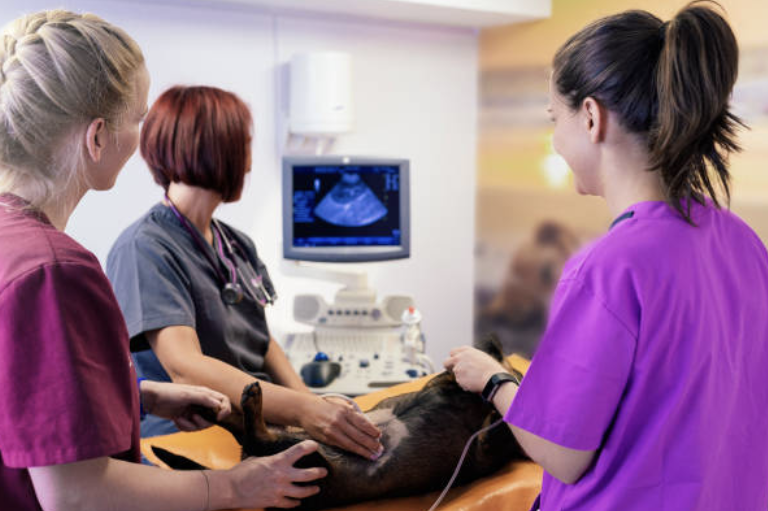In the bustling world of veterinary medicine, ultrasound technology stands as a beacon of innovation, offering clarity and precision that was once hard to imagine. Dr. Nathan C. Nelson, a distinguished figure in the field and a clinical professor at North Carolina State University, often turns to ultrasound when traditional methods fall short. He finds it particularly useful for abdominal imaging, where it surpasses radiographs in revealing hidden ailments.
Ultrasound isn’t just about capturing images; it’s a dynamic tool that guides veterinarians during procedures such as organ sampling. Dr. Nelson, for instance, uses it to precisely target liver nodules for biopsy. Beyond diagnostics, ultrasound excels in functional assessments, like monitoring cardiac health or detecting blood flow issues, which are crucial for comprehensive animal care.
Dr. Tony Pease, another luminary in veterinary radiology and chief veterinary medical officer at Viticus Group, champions ultrasound for its ability to diagnose conditions like intestinal blockages and pancreatitis. His enthusiasm for the technology is evident as he describes its role in guiding needle aspirations, which are vital for both treatment planning and prognosis.
Meanwhile, on the other side of the country, Dr. Grant Middleton of Vision Pet Imaging delves into the depths of animal abdomens, exploring organs and systems to pinpoint sources of distress. His work highlights the versatility of ultrasound, which also aids in diagnosing less common conditions such as cervical diseases and musculoskeletal disorders.
The narrative of ultrasound’s capabilities continues with Dr. Anthony Fischetti at the Schwarzman Animal Medical Center in New York. Each day, he and his team perform numerous ultrasounds, uncovering everything from simple gastrointestinal blockages to life-threatening cancers. The insights gained from these scans are invaluable, guiding treatment decisions and significantly impacting patient outcomes.
The evolution of ultrasound technology has been marked by significant advancements, particularly in the realm of portability. Modern handheld units, which display images on tablets, have revolutionized the practice by making ultrasound accessible in various settings, from rural clinics to emergency rooms. Despite their compact size, these devices offer impressive functionality, a testament to the leaps in technology that have democratized high-quality veterinary care.
However, the proliferation of ultrasound technology brings new challenges, particularly in training. As Dr. Pease points out, the barrier to entry isn’t just cost but also skill. Recognizing this, many companies now offer comprehensive training programs, empowering more veterinarians to integrate ultrasound into their practices effectively.
Dr. Middleton sees a shift in the veterinary landscape as demand for ultrasound diagnostics surges. This trend mirrors developments in human medicine, where specialized training programs have expanded the pool of practitioners proficient in ultrasound, ensuring that more patients benefit from this critical diagnostic tool.
In purchasing ultrasound equipment, considerations extend beyond mere cost. Dr. Nelson advises weighing factors like image quality and the specific needs of the practice. Larger, more sophisticated units might be necessary for detailed imaging in large or deep-chested animals, while a high-resolution linear transducer might suffice for a cat-only clinic.
The journey of ultrasound in veterinary medicine is one of continuous innovation and adaptation. As the technology evolves, so too does the expertise of the veterinarians who wield it, ensuring that every pet, from the smallest kitten to the largest horse, receives the best possible care. In this ever-changing field, ultrasound remains a vital tool, shedding light on mysteries hidden deep within our beloved animals.



